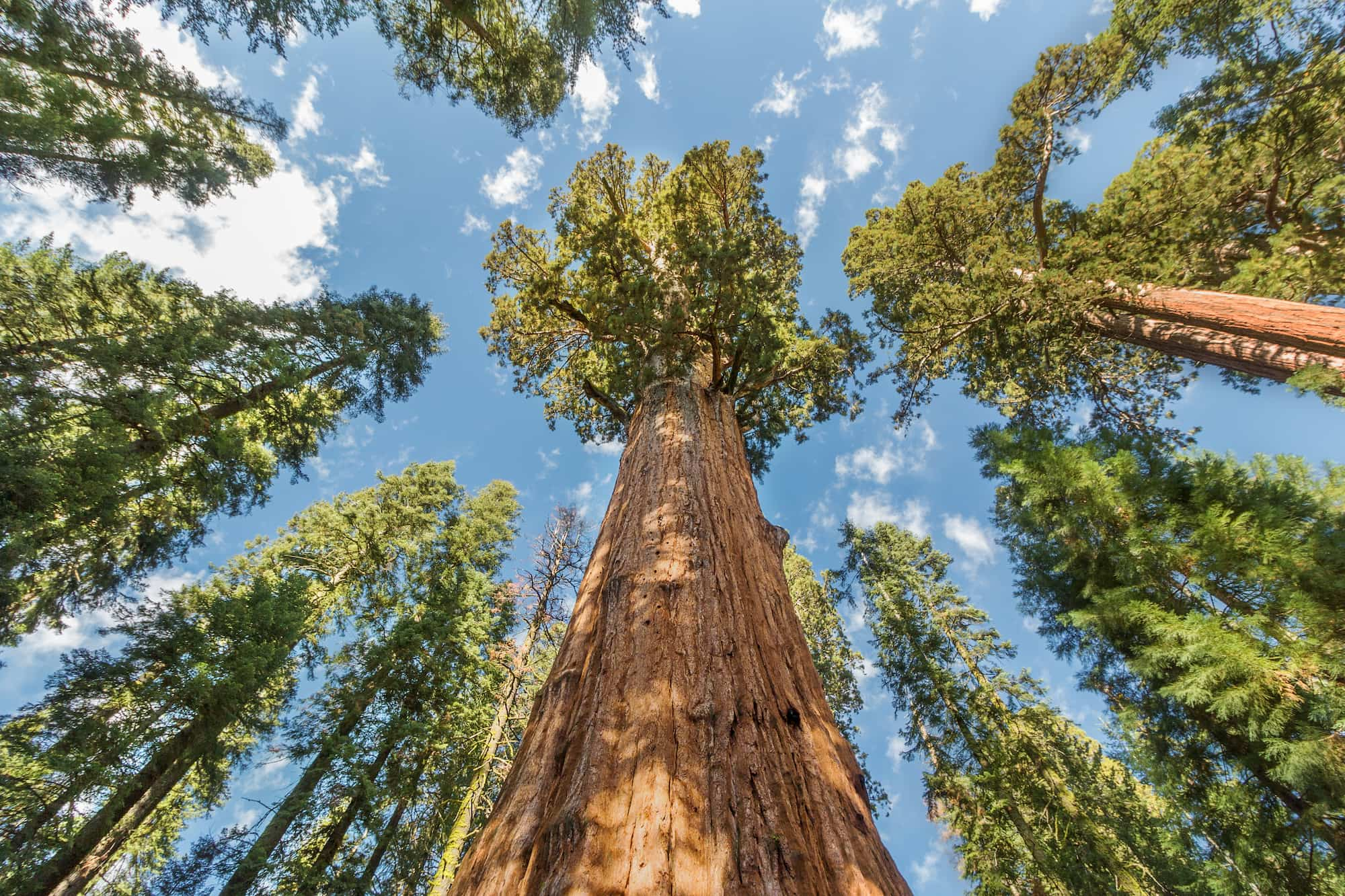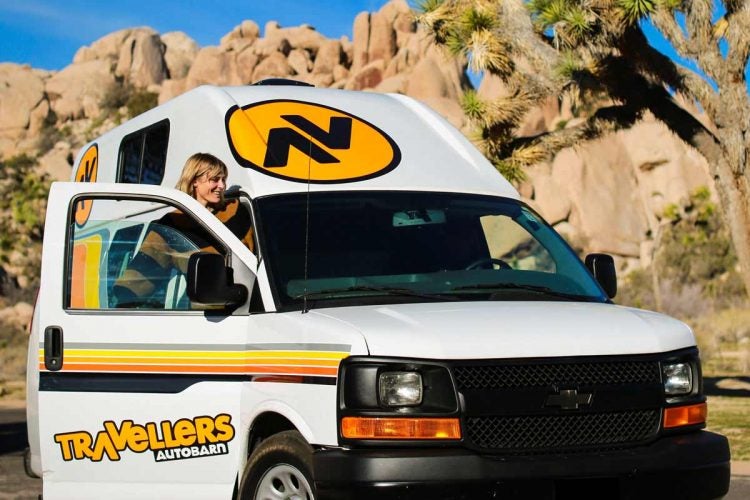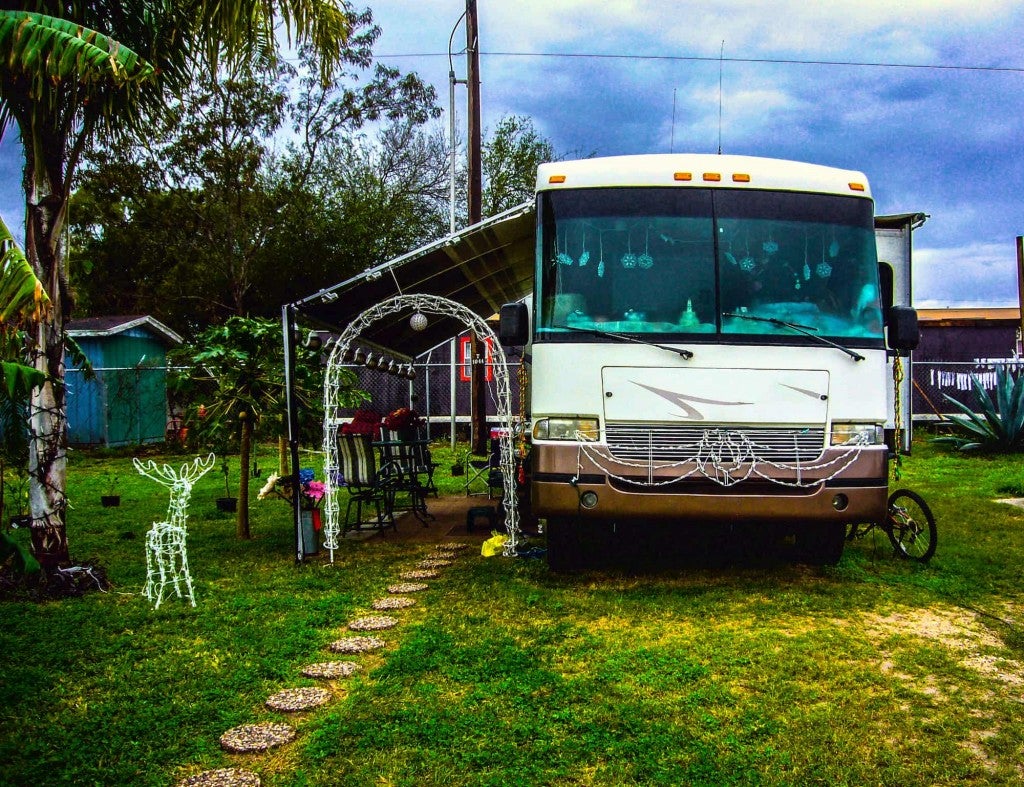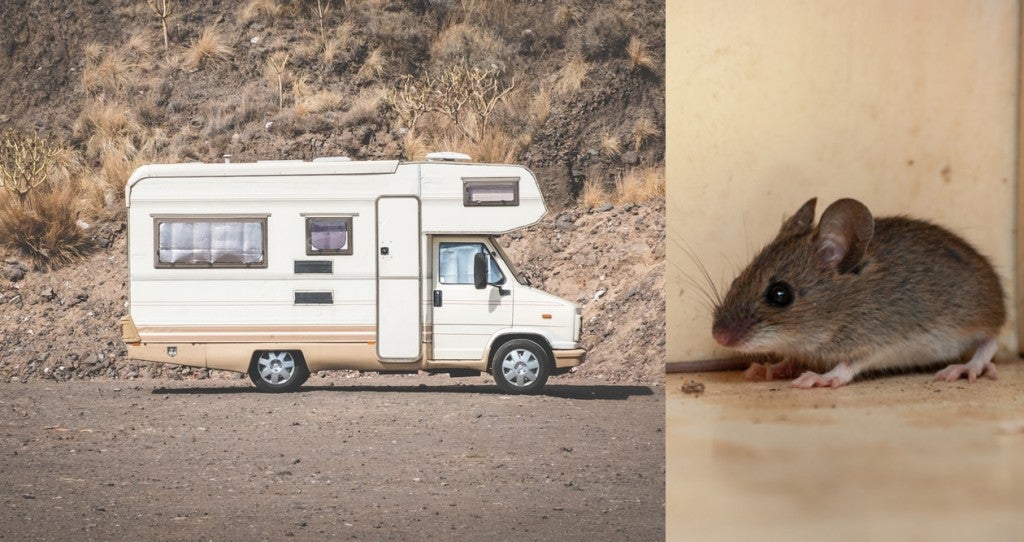This article about Giant Sequoia National Monument was brought to you by Travellers Autobarn, a rental van company that makes it easy to find RV rentals in San Francisco, Los Angeles and Las Vegas to get you on the road and exploring the west.
Giant sequoias are the largest trees in the world. They grow among conifers on a 60-mile stretch of the Sierra Nevada Mountains in California and don’t grow anywhere else in the world.
Giant Sequoia National Monument is split into a northern and southern portion, encompassing a total of 328,315 acres. One section of the monument is located south of Sequoia National Park and the other north of it. Both are located within Sequoia National Forest.
Read on to learn more about this place and why it fills its visitors with profound wonder each year.
When To Visit Giant Sequoia National Monument

Tupungato / Shutterstock.com
Summers are hot and winters are cold in the monument. Depending on preference, the shoulder seasons of early fall and late spring may be the best times to visit.
Because the monument experiences vast temperature fluctuations throughout the year, below are temperature averages throughout the year to help plan your trip.
Giant Sequoia National Monument Average Temperatures (Low – High)
January: 39 – 58°F
February: 43 – 65°F
March: 47 – 70°F
April: 50 – 77°F
May: 56 – 85°F
June: 62 – 93°F
July: 67 – 98°F
August: 66 – 97°F
September: 61 – 92°F
October: 53 – 83°F
November: 44 – 68°F
December: 38 – 58°F
*Source: The Weather Channel
Temperatures can differ so dramatically within the monument due to elevation fluctuations. Giant Sequoia National Monument hosts land with elevations from 2,000 feet all the way up to 10,000 feet. Snow can be expected in the more mountainous areas during late fall, winter, and early spring.
Hiking In Giant Sequoia National Monument
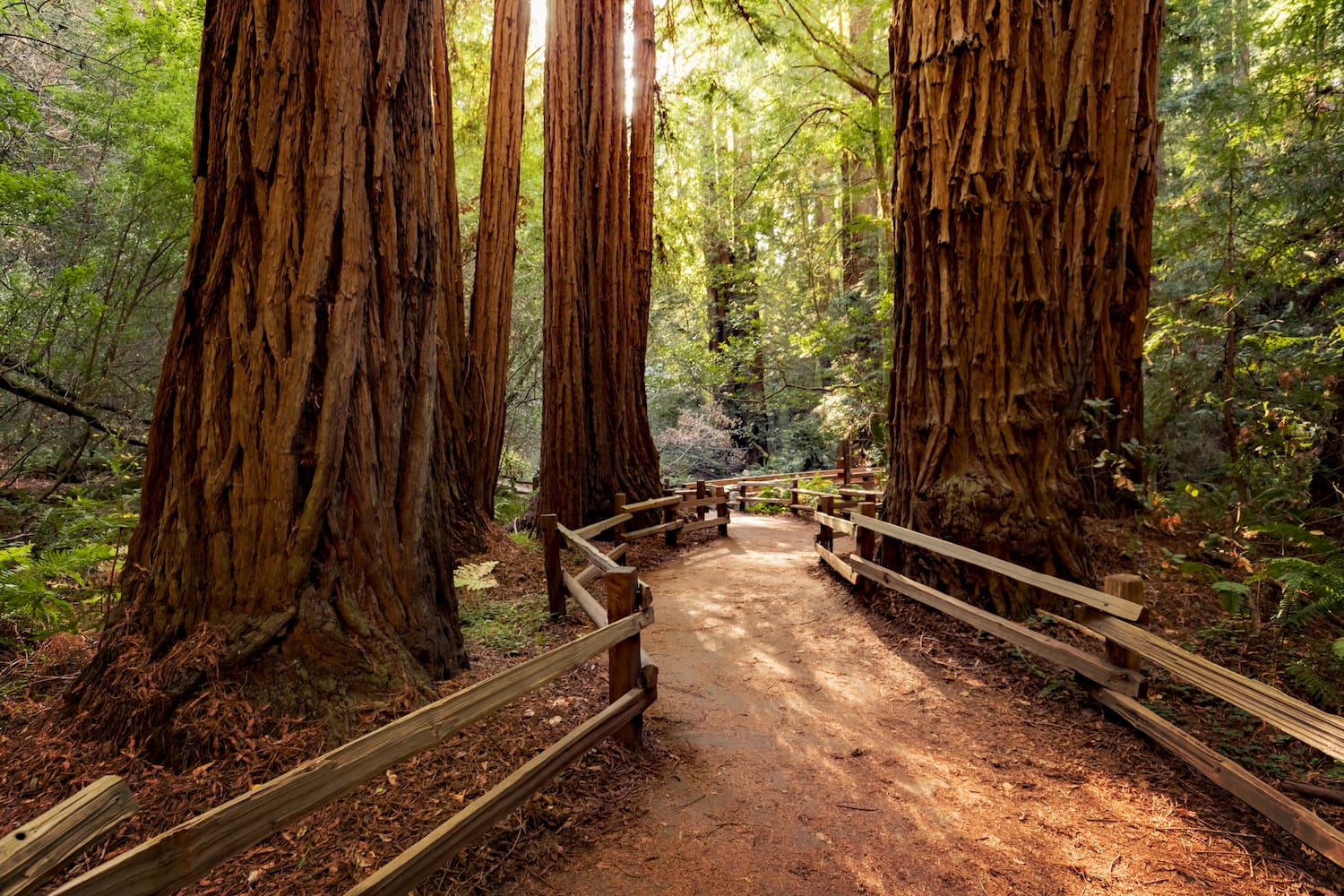
People primarily visit the Monument to see the legendary giant sequoia. According to the U.S. National Forest Service:
“The amazing giant sequoia is one of the largest organisms on earth and grows from a seed less than half-an-inch long! When fully grown, the sequoia pushes its craggy tree top more than 250 feet into the sky. A few rare specimens have grown taller than 300 feet. But it is the sequoia’s huge girth that sets it apart from all other trees. Sequoias are commonly more than 20 feet in diameter and at least one has grown to 35 feet across. Six people would have to lay head-to-toe to match this width.”
Hiking is one of the best ways to enjoy these profound trees. There are plenty of hiking throughout the monument, ranging from easy to advanced. Below are hiking trails we recommend.
Red Hill Grove
The Red Hill Grove Trail is an out-and-back trail approximately 5 miles in total. Although the sequoias in this grove are few and scattered, it does contain a cluster of around 12 very large, ancient sequoias.
Trail Of 100 Giants

The Trail of 100 Giants is the most popular trail in Giant Sequoia National Monument, but for good reason. The trail is highly accessible, located right off the Western Divide Highway. It is within walking distance of the Redwood Meadow Campground. The trail itself is calm and leisurely. Hikers have two options while using this trail: take the half-mile paved loop, or try out the longer 1.5-mile hike that detours through the Fallen Giant Loop. Hikers can experience about 20 to 25 massive old-growth sequoias on the trail.
Freeman Creek
For a more challenging day hike, check out The Freeman Creek Trail, a 7.5 miles out and back trail. Visitors will experience scattered sequoia groves and the George Bush Tree, the biggest tree on the trail. The trail is peaceful, serene, and unlogged.
Nearby Points Of Interest
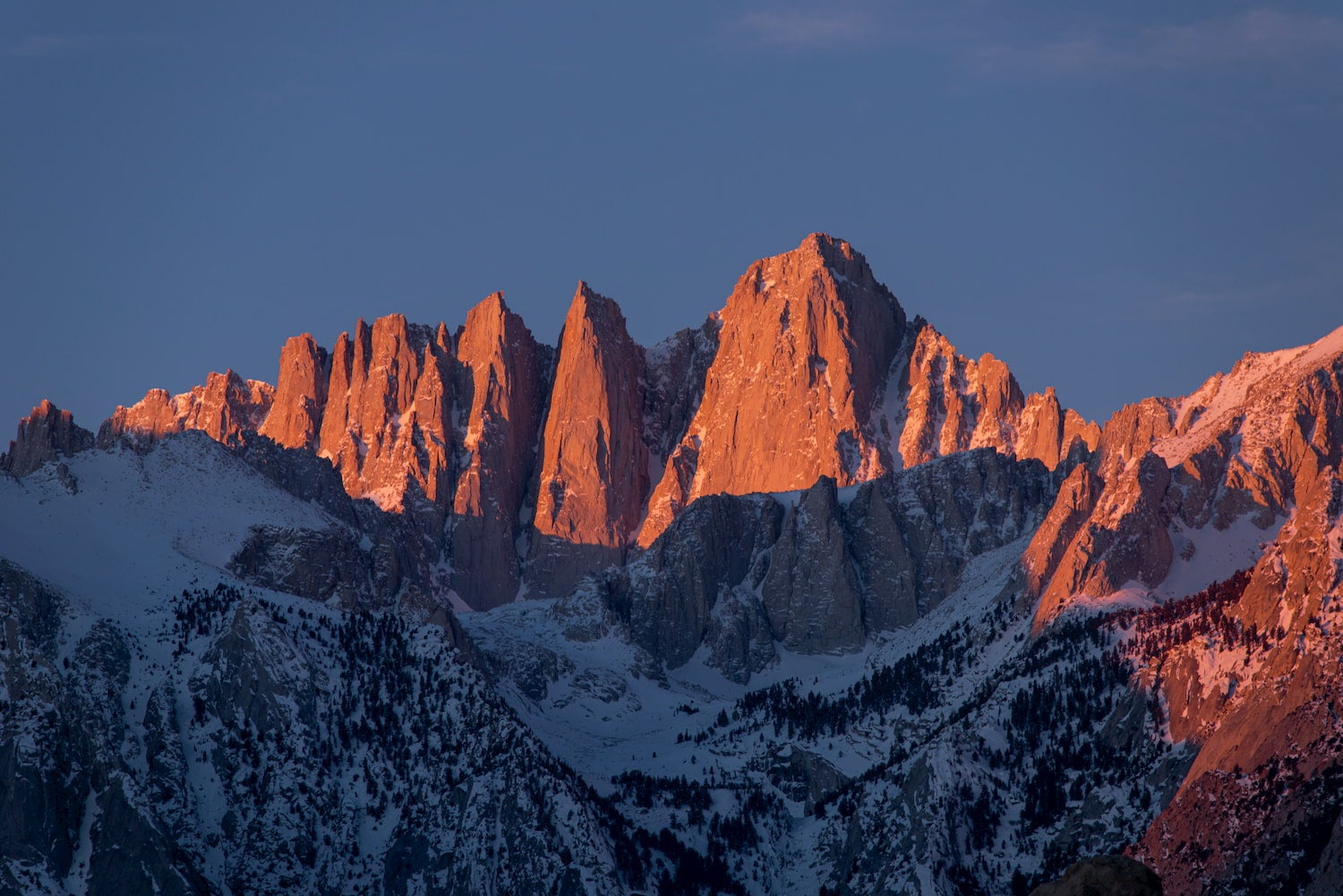
Giant Sequoia National Monument is located in the Sierra Nevada among dozens of other spectacular points of interest. If travelers wish to extend their journey to see more of the Sierra, we recommend pinning these spots on your map.
Sequoia And Kings Canyon National Parks
Immerse yourself in the Land of Giants by visiting these two national parks north of the monument. The National Park Service currently protects 808,000 acres of wilderness within the national parks. Features of Sequoia and Kings Canyon National Parks include huge mountains, rugged foothills, deep canyons, vast caverns, and yes, the world’s largest trees.
Mount Whitney
At 14,505 feet, Mount Whitney is the tallest mountain in the contiguous United States. The most frequented trail to the summit is a 10.7 round-trip hike beginning at Whitney Portal just 13 miles west of Lone Pine. Hikers are required to obtain a permit to summit the mountain. Make sure to do this early, as getting a permit can be very competitive.
Camping Near Giant Sequoia National Monument
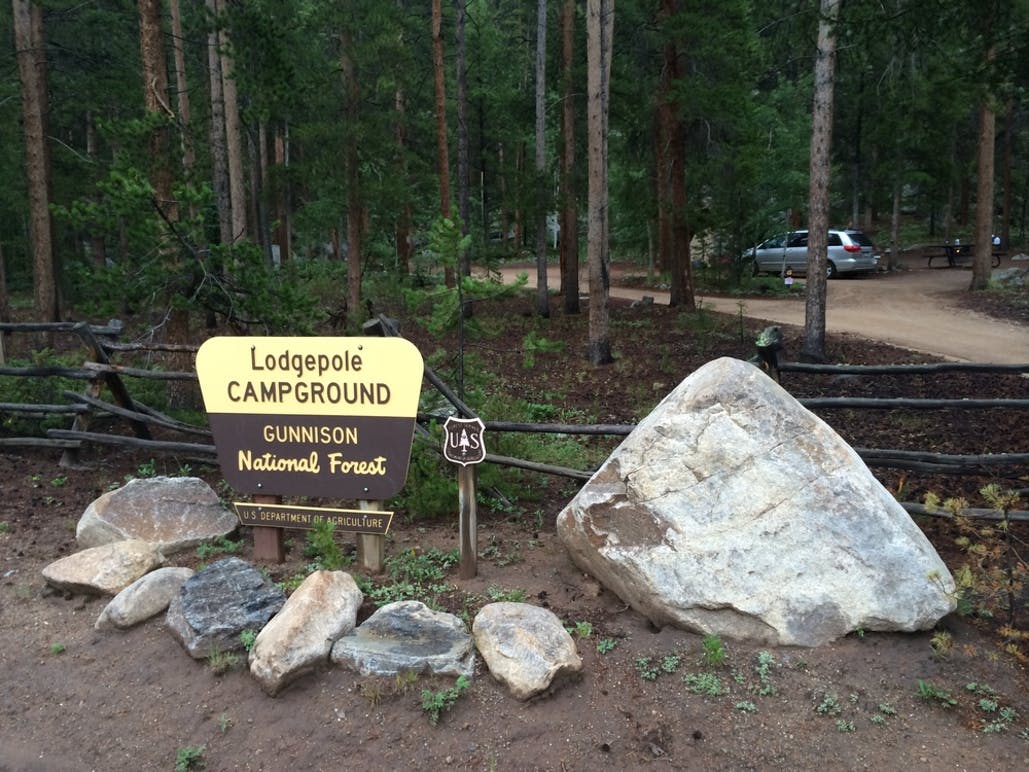
The monument and its surrounding area are camper-friendly with plenty of outdoor adventure opportunities, depending on your preferences.
Lodgepole Campground
Lodgepole Campground is located along the Marble Fork of the Kaweah River in the Sequoia and Kings Canyon National Parks and sits at an elevation of over 6,000 feet. The General Sherman Tree, the world’s largest in volume, is located just two miles away from the campground.
The campground features tent sites, RV sites, group sites, and drinkable water. The fee is $22 per night.
“If you enjoy camping next to a river, this is a great spot for you. The campground is clean, comfy and provides enough scenery in the area to make staying here completely worth it.” — The Dyrt camper Myles R.
Alabama Hills Recreation Area
The Alabama Hills lie between the Sierra Nevada and Inyo Mountain ranges. The rocks that make up the Alabama Hills are a well known climbing destination. The red-brown rocks are striking in contrast to the snow-covered, craggy peaks of the sierra in the background.
The campground is located just west of Lone Pine along Whitney Portal Road. RV sites, tent sites, and group camping sites are all available. The campground also allows pets and fires.
“Bucket list camping! This is one of my all time favorite camping sites. It’s just a few miles west of Bishop. The site is famous for filming westerns and commercials. The rock formations are incredible along with the views of the Sierras.” — The Dyrt campers Steve and Ashley G.
Tuttle Creek Campground
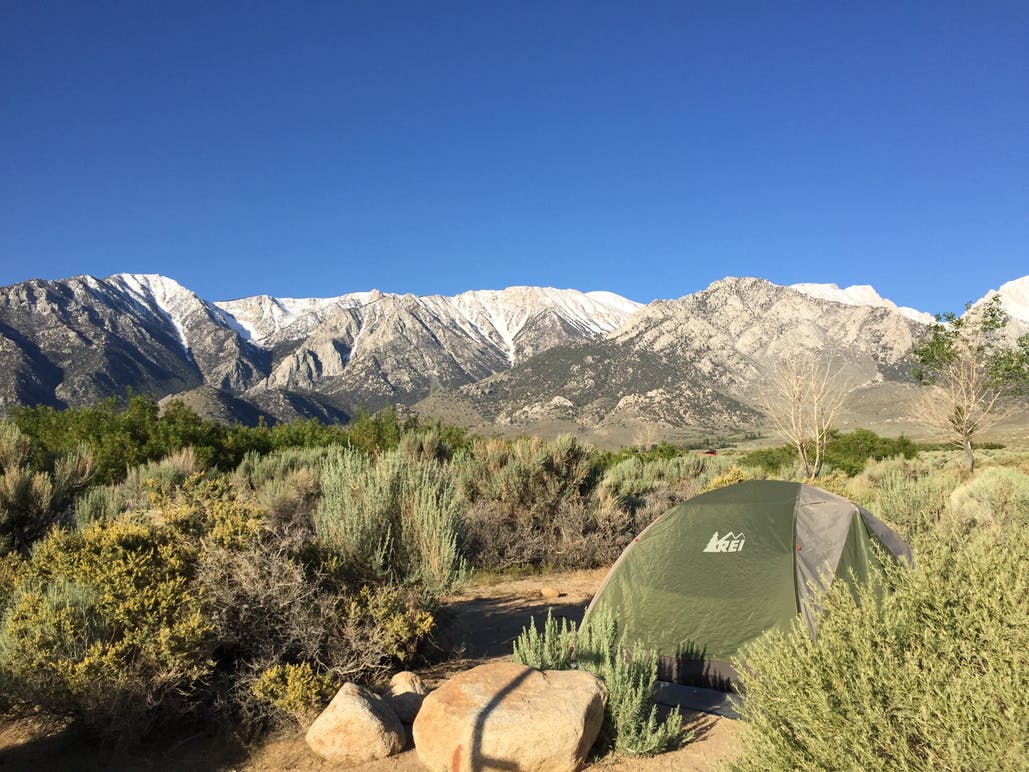
Image from the Dyrt camper Crystal N.
This is another spot located near Lone Pine that offers gorgeous views of the Sierra. Mount Whitney, Lone Pine Peak, and Mount Williamson are all visible from the campground. Tuttle Creek Campground is also located in Alabama Hills.
The campground offers tent cabins, dispersed camping, RV sites, group sites, and tent sites. Pets are allowed and drinking water is provided. Spots cost $8 per night and are open year-round.
“For just $8 a night you can enjoy the Eastern Sierras with plenty of room to spare between you and your camping neighbors. This place is a favorite for us, with fishing, snow capped mountains, and the cutest little kangaroo mice I have ever seen!” — The Dyrt camper Crystal N.
This article about Giant Sequoia National Monument was brought to you by Travellers Autobarn
You can camp in style in their camper van rentals
The Dyrt is the only camping app with all of the public and private campgrounds, RV parks, and free camping locations in the United States. Download now for iOS and Android.Popular Articles:
Articles on The Dyrt Magazine may contain links to affiliate websites. The Dyrt receives an affiliate commission for any purchases made by using such links at no additional cost to you the consumer.

